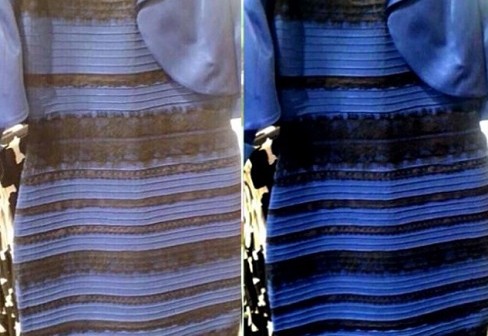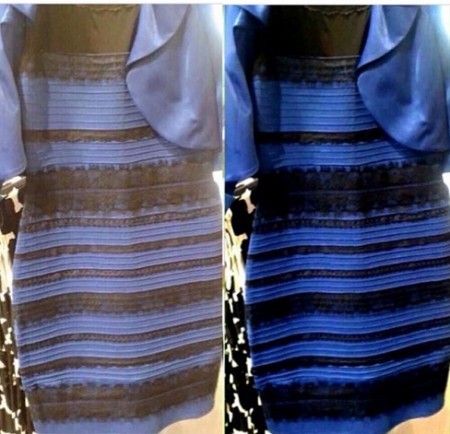Were you all just as shocked to learn about “the dress” debate? You know, the debate about the color of a dress that went viral on social media on Thursday.
The dress (shown above) was the hot topic of much discussion yesterday after a Tumblr account shared the image asking whether it was gold and white or blue and black. The photo received thousands of re-shares and news coverage, to say the least. From what we’ve gathered, the dress (seemingly white and gold) is really blue and black but with the affects of Photoshop the colors were manipulated to mimic sunlight.
As simply as it may sound, there’s an interesting perspective and science to all this according to Wire.com.
“…for the past half-day, people across social media have been arguing about whether a picture depicts a perfectly nice bodycon dress as blue with black lace fringe or white with gold lace fringe. And neither side will budge. This fight is about more than just social media—it’s about primal biology and the way human eyes and brains have evolved to see color in a sunlit world.
Light enters the eye through the lens—different wavelengths corresponding to different colors. The light hits the retina in the back of the eye where pigments fire up neural connections to the visual cortex, the part of the brain that processes those signals into an image. Critically, though, that first burst of light is made of whatever wavelengths are illuminating the world, reflecting off whatever you’re looking at. Without you having to worry about it, your brain figures out what color light is bouncing off the thing your eyes are looking at, and essentially subtracts that color from the “real” color of the object. “Our visual system is supposed to throw away information about the illuminant and extract information about the actual reflectance,” says Jay Neitz, a neuroscientist at the University of Washington. “But I’ve studied individual differences in color vision for 30 years, and this is one of the biggest individual differences I’ve ever seen.” (Neitz sees white-and-gold.)
Usually that system works just fine. This image, though, hits some kind of perceptual boundary. That might be because of how people are wired. Human beings evolved to see in daylight, but daylight changes color. That chromatic axis varies from the pinkish red of dawn, up through the blue-white of noontime, and then back down to reddish twilight. “What’s happening here is your visual system is looking at this thing, and you’re trying to discount the chromatic bias of the daylight axis,” says Bevil Conway, a neuroscientist who studies color and vision at Wellesley College. “So people either discount the blue side, in which case they end up seeing white and gold, or discount the gold side, in which case they end up with blue and black.” (Conway sees blue and orange, somehow.)”
Debate aside, if you were able to see the black and blue tint, it may be because you have good nocturnal vision. Please read the full article by visiting the Wired.com.
Some conspiracy theorist, however, would argue that the dress “phenomenon” was a well constructed marketing campaign to distract us from a more important issue at hand.
Thursday, February 26, 2015, also marked the third anniversary of, what most would consider, the wrongful death of unarmed Florida teen Trayvon Martin. It was recently announced that nearly two years after a juror found the teen’s killer, George Zimmerman, not guilty of the crime, there will also be no federal charges.
In honor of Martin a #BlackLivesMatter supported created this visual to keep him memory alive and ti continue the fight for justice.
Sweethearts, what are some of your thoughts on the matter.


